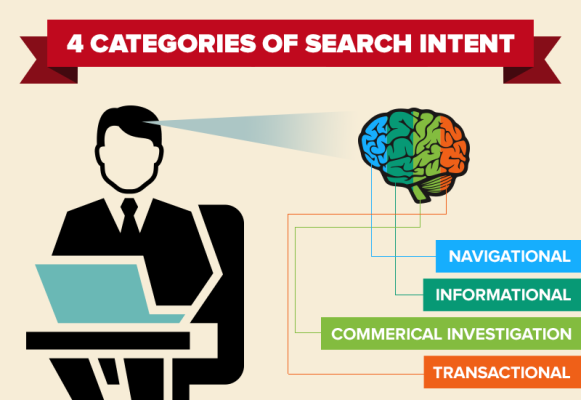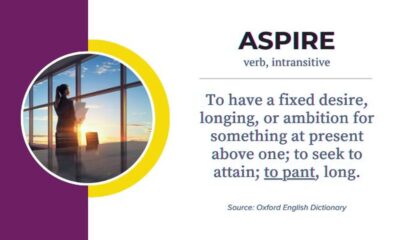OTHER
What is Search Intent and How Can You Optimize it

What is Search Intent?
With the evolving digital world and consumers knowing what they want, it gets harder to engage them, and thus, search intent has become a hot topic for marketers.
Search intent refers to the reason behind a searcher’s query on a search engine. Creating content to satisfy search intent has emerged as the biggest goal for Google since it not only means a better user experience, but the traffic caused by it also increases ad revenues.
In content marketing, search intent should be a major part of the strategy. Why? Both mobile and voice search cater to audience’s short attention spans, so the faster your content answers readers’ queries, the higher the chances are they’ll stick around.
Why is Search Intent Important?
Optimizing search intent ensures that users engage with your content for a longer period of time. This not only acts as a positive signal for Google to boost your website higher in ranking, but it also helps you raise brand awareness through the rankings, which drive relevant leads and prospects to your site.
The more familiarity users have with your brand, the more relevant you become to them, and consequently, the more conversions and retention you can drive your way.
What is Search Intent Optimization?
Search intent optimization means giving the right answer at the right time and in the way your target audience needs it! That is, it is about meeting your audiences’ immediate needs and winning their hearts.
It has become one of the biggest digital marketing tools to improve your ranking and drive qualified business leads to your website by serving your customers’ real queries and problems.
Search intent optimization allows you to:
To optimize your content for search intent, you need to use the right keywords. And, the correct usage of keywords to curate content that satisfies search intent has become one of the biggest tools for digital marketing. However, the curation of keywords for search intent depends on the types of user’s search intent.

Types of Search Intent
Search intent or user intent can broadly be divided into four categories:
Informational
This includes searches where the user wants to learn something, and it typically starts with “how-to” or “what is.” For example, “How to make pizza without yeast?”
Navigational
The purpose behind these searches is to find specific websites or web pages. It acts as an alternative to having to type out an entire URL. Navigating search intent examples include searches like “The Times of India” or “Twitter login.”
Transactional
Transactional search intent is action-based, whereby the user is searching for a product. It includes keywords like “discount,” “buy,” or “order.”
Commercial
Commercial user intent typically covers informational searches that have transactional intent. Examples include searches like “Harry Potter T-shirts” or “Best coffee maker.”
It is important to perform a search intent analysis before you start optimizing it to have a better ranking on Google pages.
How to Optimize Search Intent
Search engine optimization is the process of curating content to align with the search intent to engage with the users and generate traffic. However, in order to implement an effective SEO strategy, one must understand the correct order of search intent optimization to follow.
- One of the first steps is to check search engine results page (SERP) reliability. Google ranking is not static. They fluctuate over time. Hence, relying on the current top-ranking pages to determine user intent might be a mistake. Use the SERP position history graph to understand the stability of the ranking over a longer period of time and its reliability.
- The second step is to align your content with the three C’s of search intent:
-
- Content type – Refers to templates like blog posts, product pages, and landing pages. Break your content up using subheadings to make it easier to read and weave the keywords into the context strategically.
- Content formats – Include articles that are how-to’s, step-by-step guides, tutorials, and reviews. Use images and videos for a better understanding of the content and include relevant URLs, metadata, and headlines.
- Content angle – The unique selling point of the top-ranking articles and pages. It gives you insight as to what your audience values when they type in a query. You can optimize your content accordingly.
- The third step is to use the search results, and the “people also ask” segments to understand the search intent and accommodate it into your content. Once you determine the user intent using SERP, you can form your content based on the three C’s present in the top-ranking pages.
- Finally, monitor the cues given in the search results, add those keywords into your content, and optimize it for search intent.
Now that you know the steps you need to take to optimize search intent, here are a few ways you can go about doing it:
Leverage All Search Engines
While Google may be the most popular search engine, you also need to consider other search engines, such as YouTube or Bing, and work towards ranking on them as well. If you ignore optimizing for other search engines, you might miss an opportunity to rank.
Improve Existing Content
Your website may have a few pages that should rank but don’t. That is why you should not just focus on new content but rather optimize your old content for search intent as well. It is one of the fastest ways to drive organic and relevant traffic to your website.
Examine the Competitors
It’s a good idea to look at your competitors and look at what pages they are ranking for before creating new pages or reformatting your old content. Take a look at the top-ranking pages and figure out these questions:
- How is the page’s format?
- What is the tone of the copy?
- Which points do they mention?
- What can you improve/add to that page?
Getting an answer to these questions will help you create the best and relevant piece of content or a landing page for the topic.
Wrapping Up
While creating content, it is essential for you to ensure that what you’re writing is not only relevant to the terms your audience searches for but also the search intent behind it.
The key takeaway from the article is that when you create SEO-friendly content, be sure to understand the search intent before optimizing your old content or creating new content.
Do you optimize for search intent? Comment with a few SEO tools you use and your best tried-and-tested tips.
Author Bio
Mansi works as a Content Manager at Clientjoy, a Sales CRM & Growth Engine for freelancers & agencies. When she’s not busy working, she keeps herself busy learning or binge-watching her latest sitcom obsession or writing about it. You can connect with her on LinkedIn.


















